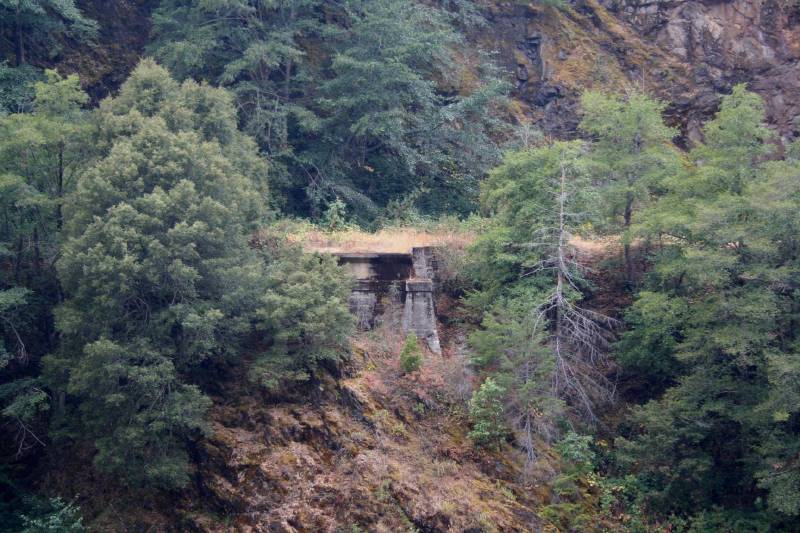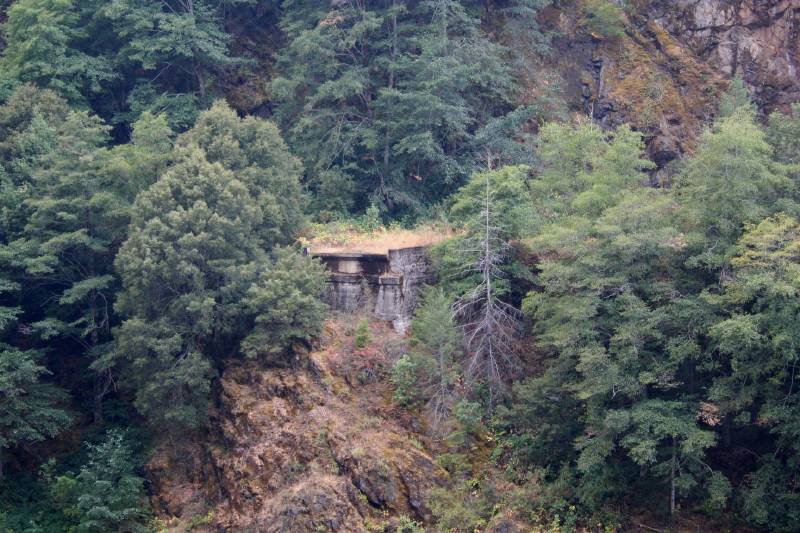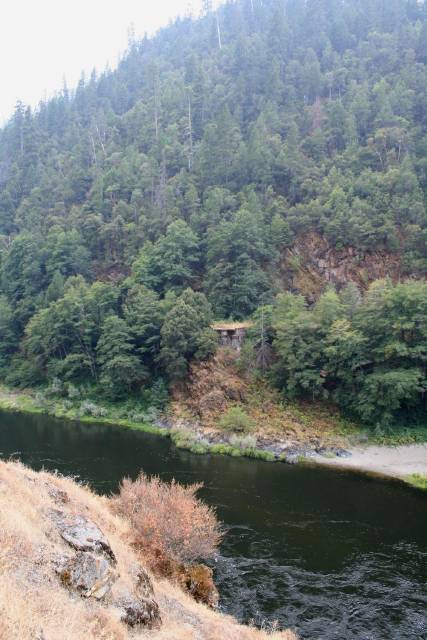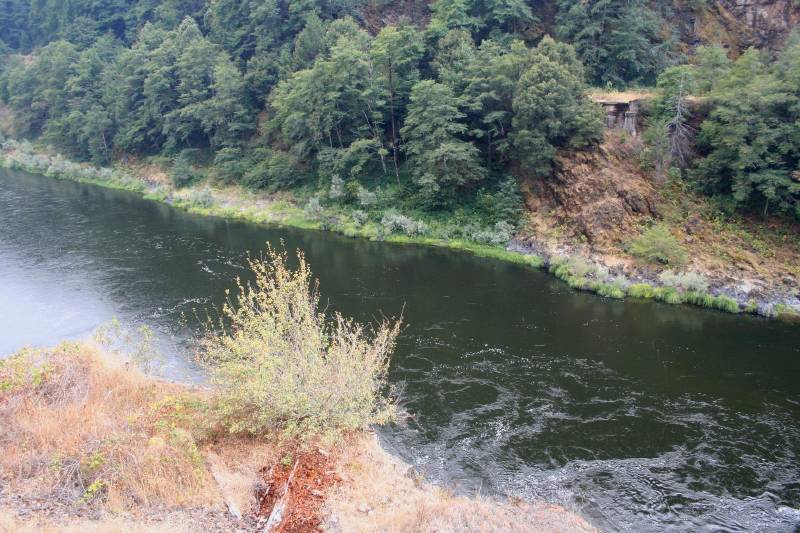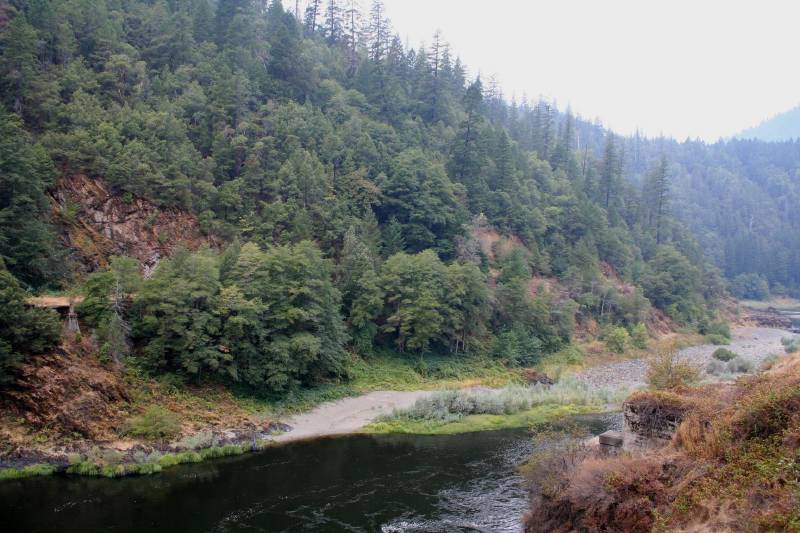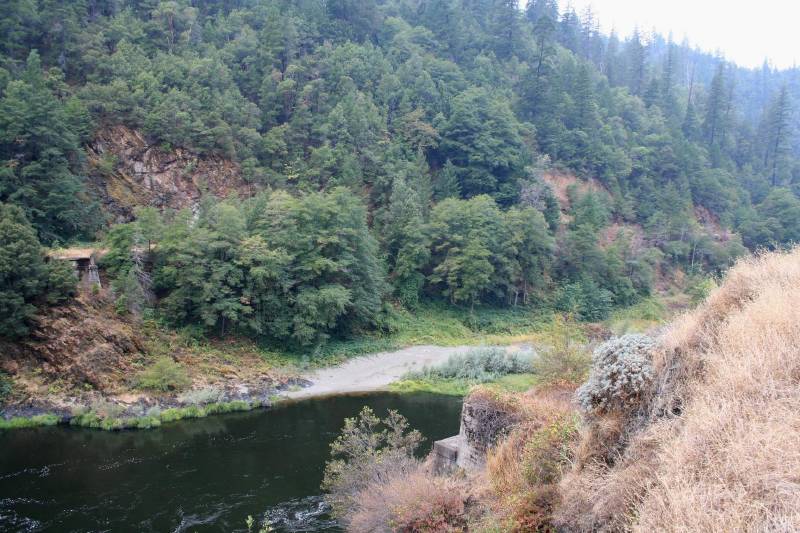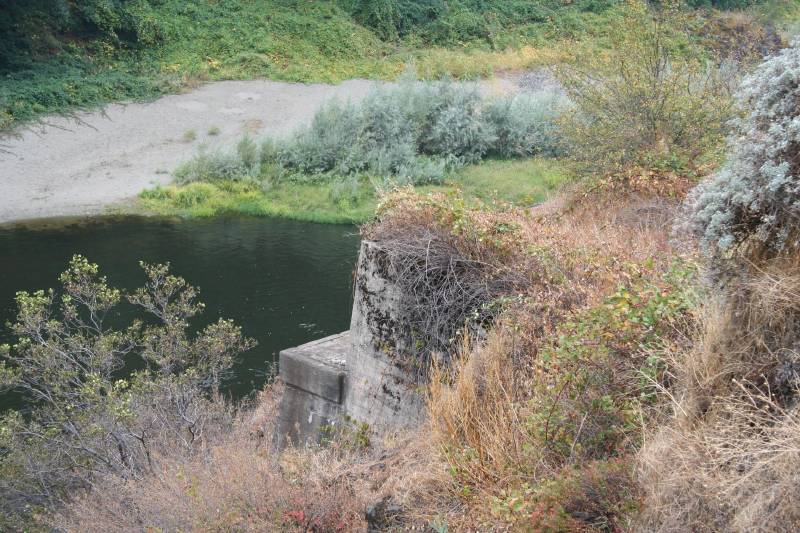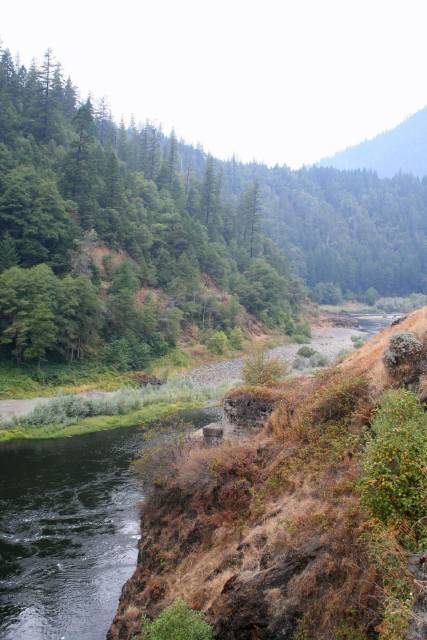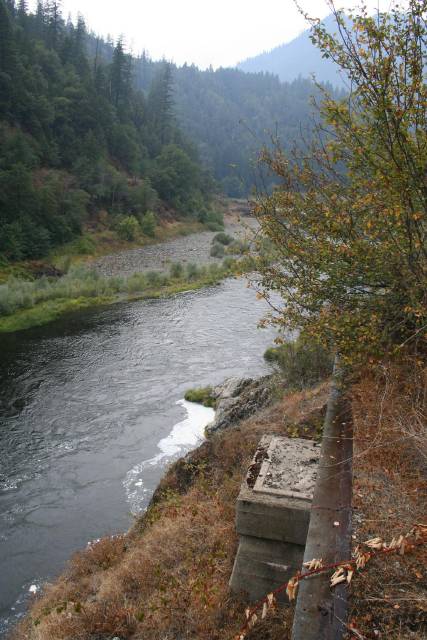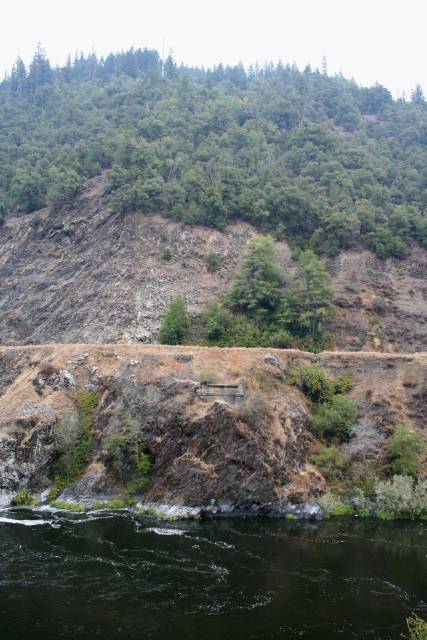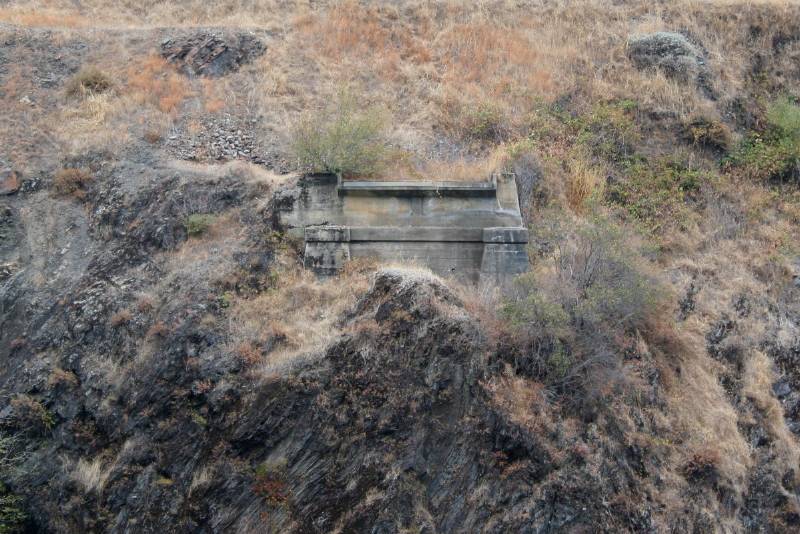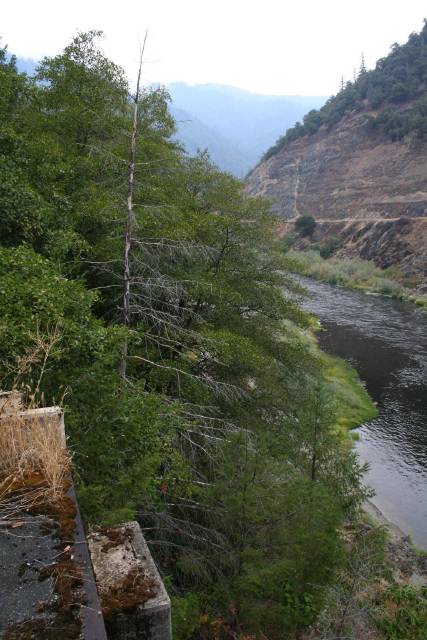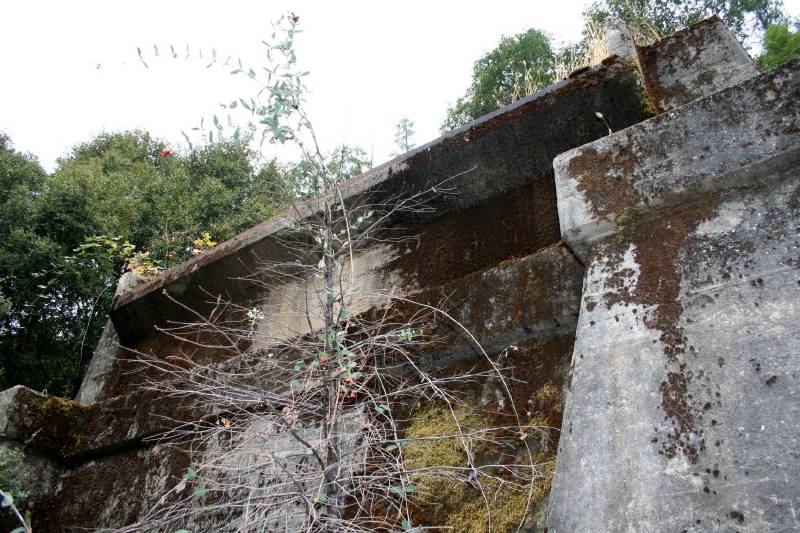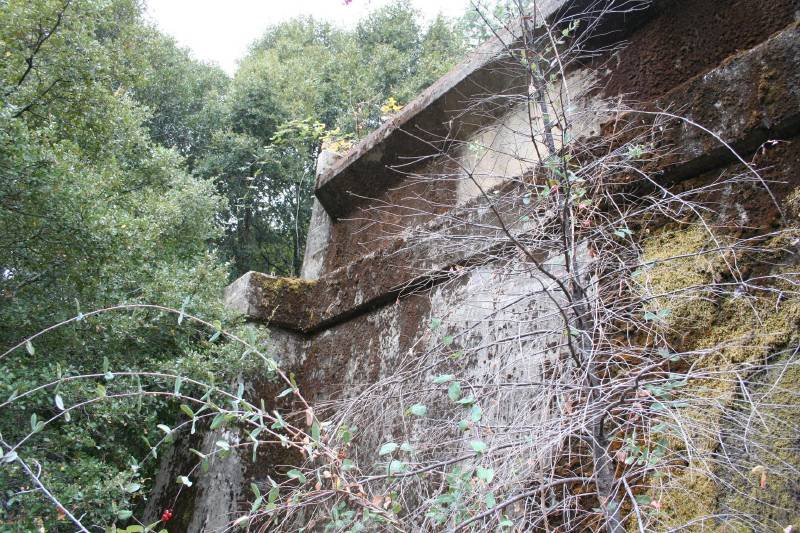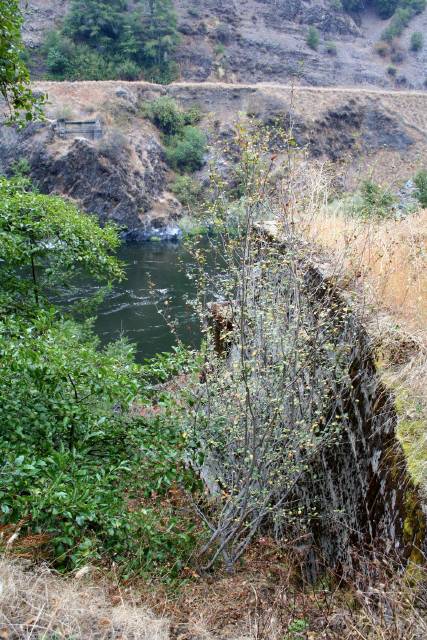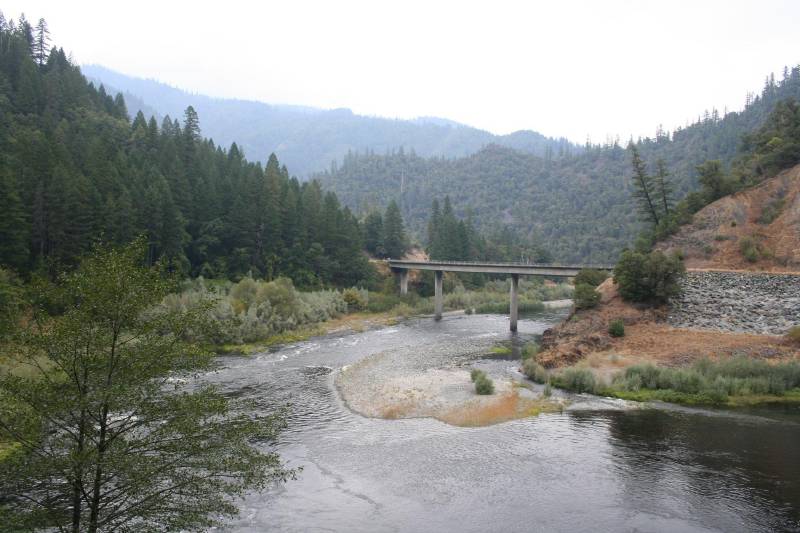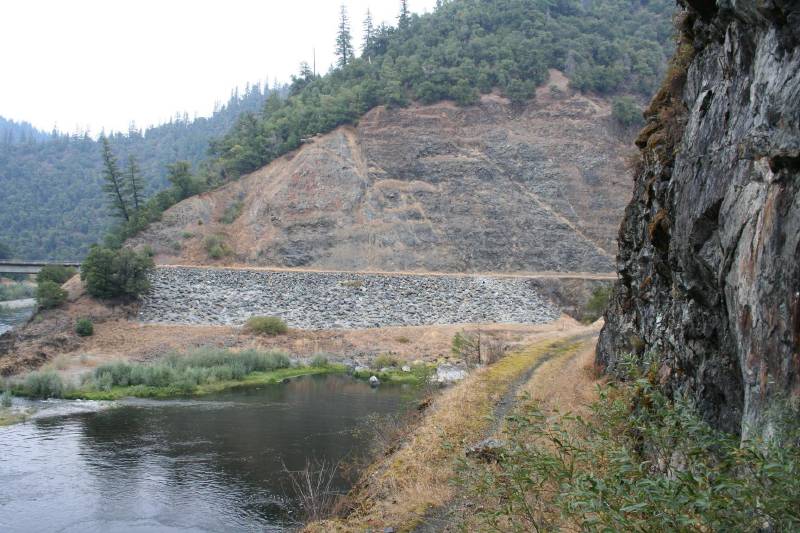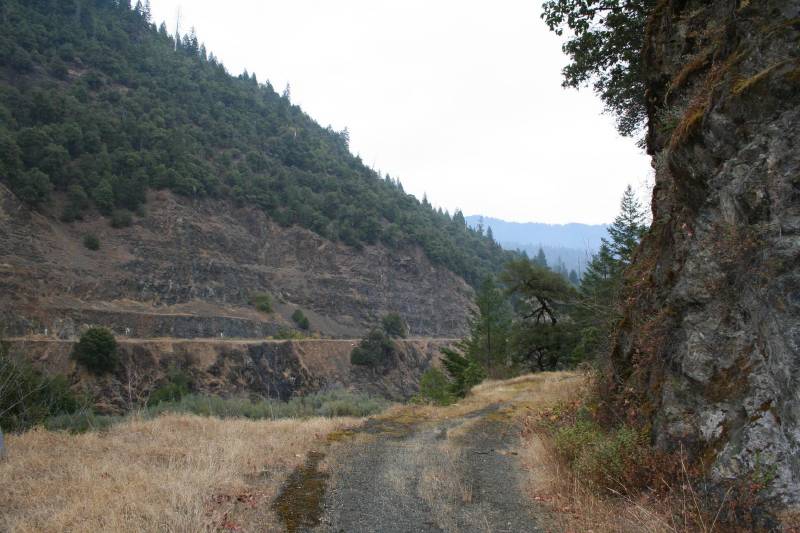Blue Nose Bluff Truss Bridge Remnants
This is an image set within the Bridgemeister collection.
| Bridge: | Blue Nose Bluff Truss Bridge Remnants |
| Location: | Dillon Creek Campground vicinity, California, USA - Klamath River |
| Coordinates: | 41.567833 N 123.531 W |
| Maps: | Acme, GeoHack, Google, OpenStreetMap |
| Image Set Contributor: | Patrick S. O'Donnell |
| Related Image Lists: | All from Patrick S. O'Donnell All in California All in USA All Truss Bridges |
| Credit: | All photos by Patrick S. O'Donnell. Please do not reuse without permission. |
In 2005, Patrick found these abutments along the Klamath River that appeared to have been from a suspension bridge. The location, just southeast of the Dillon Creek Campground, did not match any suspension bridges that I was aware of. USGS maps show "Blue Nose Bluff" at roughly this location and a "Rattlesnake Bar" just to the south (not the better known Rattlesnake Bar, now inundated, on the American River). The coordinates given above are for the west abutment. The east abutment is located at N 41.568517 W 123.530117. Patrick wrote: "I would estimate the span at being approximately 400'. I tried to look for evidence of anchorages, but was unsuccessful. The east side (present roadway) anchorage would have been covered up by the grading fill from the newer CA SR96. The west side looks like there were many landslides onto that old path including one at where there may have been an anchorage. The first images in this batch are from the east side of the Klamath River looking over to west side abutment, followed by images of both, then of just the abutment here on the east side."
After I posted Patrick's photos, much discussion ensued between Patrick and Eric Sakowski to discover the bridge that once sat on these abutments.
Eric located photos of the bridge at the Siskiyou County Historical Society (Yreka, California). The bridge was a long single-lane truss, not a suspension bridge. Eric writes: "Looking at photos and the panel spacing, I would guess the span is around 360 feet. The bigger question is what year it was built. It definitely looks post-1910 given the bulkiness of the beams in an era when pre-auto truss bridges were pretty weak looking outside of the railroads."

